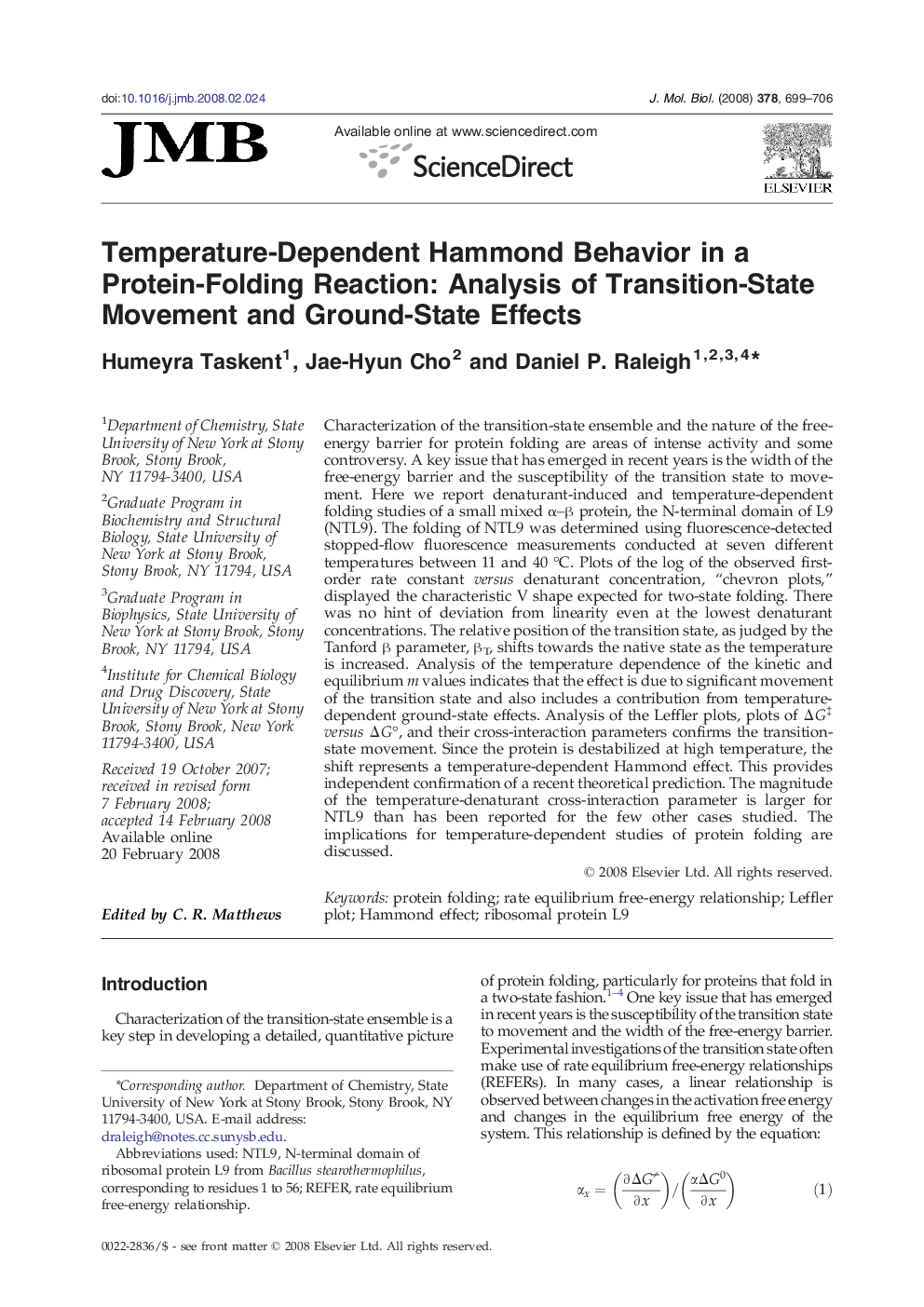| کد مقاله | کد نشریه | سال انتشار | مقاله انگلیسی | نسخه تمام متن |
|---|---|---|---|---|
| 2187698 | 1096134 | 2008 | 8 صفحه PDF | دانلود رایگان |

Characterization of the transition-state ensemble and the nature of the free-energy barrier for protein folding are areas of intense activity and some controversy. A key issue that has emerged in recent years is the width of the free-energy barrier and the susceptibility of the transition state to movement. Here we report denaturant-induced and temperature-dependent folding studies of a small mixed α–β protein, the N-terminal domain of L9 (NTL9). The folding of NTL9 was determined using fluorescence-detected stopped-flow fluorescence measurements conducted at seven different temperatures between 11 and 40 °C. Plots of the log of the observed first-order rate constant versus denaturant concentration, “chevron plots,” displayed the characteristic V shape expected for two-state folding. There was no hint of deviation from linearity even at the lowest denaturant concentrations. The relative position of the transition state, as judged by the Tanford β parameter, βT, shifts towards the native state as the temperature is increased. Analysis of the temperature dependence of the kinetic and equilibrium m values indicates that the effect is due to significant movement of the transition state and also includes a contribution from temperature-dependent ground-state effects. Analysis of the Leffler plots, plots of ΔG‡versus ΔG°, and their cross-interaction parameters confirms the transition-state movement. Since the protein is destabilized at high temperature, the shift represents a temperature-dependent Hammond effect. This provides independent confirmation of a recent theoretical prediction. The magnitude of the temperature-denaturant cross-interaction parameter is larger for NTL9 than has been reported for the few other cases studied. The implications for temperature-dependent studies of protein folding are discussed.
Journal: Journal of Molecular Biology - Volume 378, Issue 3, 2 May 2008, Pages 699–706